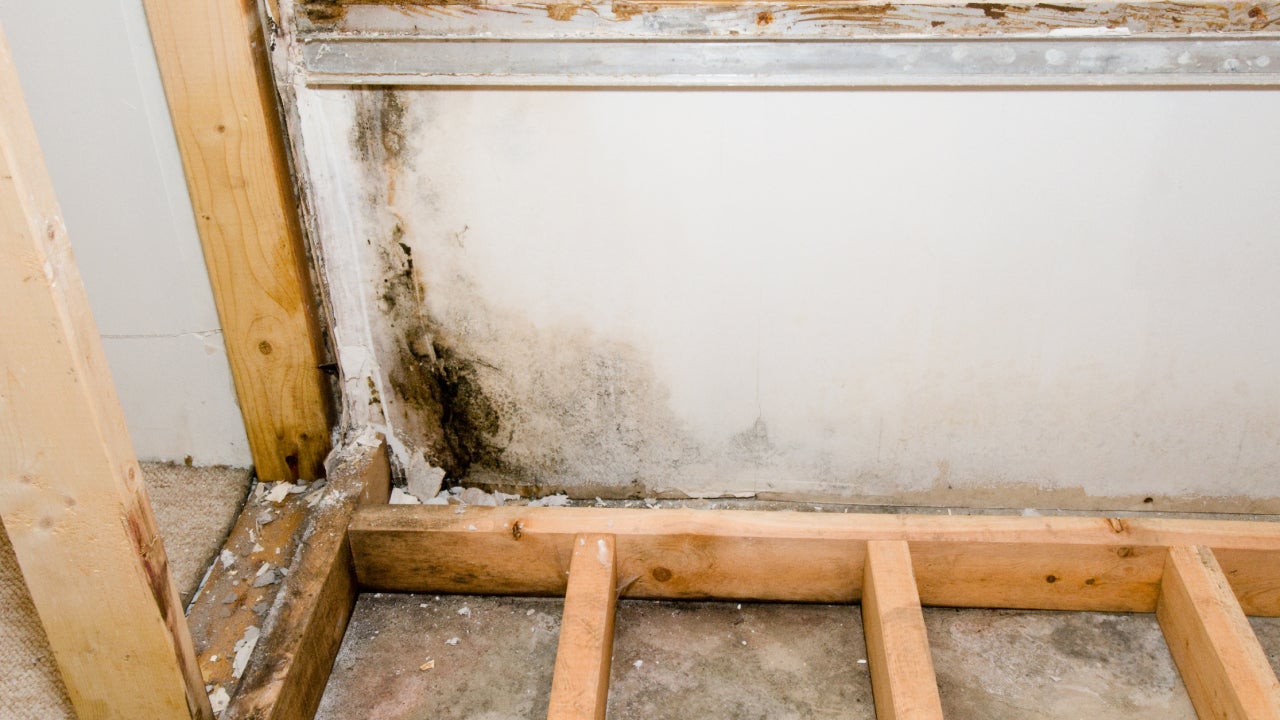What is a homeowners insurance deductible?

Key takeaways
- A home insurance deductible is the amount you are responsible for paying out of pocket in the event of an approved claim. The insurance company will cover the remaining damages, up to your coverage limit.
- Deductibles may be either a set dollar amount or a percentage based on the value of your home, depending on the insurance policy.
- While choosing a higher deductible can mean lower monthly premiums, it also means you have a higher out-of-pocket responsibility, so it’s important to choose a deductible you can afford.
In the event of a covered loss, home insurance policyholders are required to pay for a predetermined amount of damage out of pocket. This is called a homeowners insurance deductible. The insurance provider will pay for the remainder of the damage, up to the policy limit. Understanding your deductible is crucial in making sure you have the right coverage for your home. Here, Bankrate explains how homeowners insurance deductibles work and how to choose the right one for you.
What is a home insurance deductible?
A home insurance deductible is the amount of money that you will have to pay out of pocket if you file a claim through your insurance policy and it is approved. It is different from your insurance premium, which is the amount you pay in order to maintain your insurance coverage. Typically, the higher your deductible, the lower your premium. However, it’s important to choose a deductible that aligns with your financial situation.
To better understand how homeowners insurance deductibles work, here is an example. Let’s say that your roof suffered damages from a snowstorm that will cost $10,000 to repair. You file a claim with your insurance company, and it is approved. If you have a $1,000 deductible on your policy, you will be required to pay that amount to whoever is repairing or rebuilding your home, and your insurance provider will cover the remaining $9,000.
Types of homeowners insurance deductibles
There are two main types of homeowners insurance deductibles. These will be defined in the policy:
- Dollar-amount deductible: A dollar-amount deductible will define a specific dollar amount that you must pay out of pocket in a claim situation. In the roofing example above, we used a dollar-amount deductible of $1,000.
- Percentage-based deductible: A percentage-based deductible will define a specific percentage of your home’s insured value as the deductible. If your policy defines a 2 percent deductible and your dwelling coverage is $150,000, in the event of a claim, your deductible will be 2 percent of $150,000, or $3,000.
Keep in mind, you may have more than one deductible for the same policy. For example, you may have a dollar-amount deductible for all claims except for hurricanes or named storms. For those claims, you may have a separate percentage-based deductible. Make sure you understand how to read your home insurance policy to know the types of homeowners insurance deductibles that apply. If you’re unsure about something, reach out to your insurance agent to clarify.
How to choose a homeowners insurance deductible
When you are shopping for homeowners insurance, one of the primary considerations that you should take into account is your home insurance deductible. Make sure that you can afford the deductible in full on short notice should you need to file a claim.
As you look at your budget, consider what you will already be paying for your premium. Then, ask yourself these questions as you choose a homeowners insurance deductible.
How much can I afford to pay if I have to file a home insurance claim?
Take a look at your financial situation, including your earnings, assets and savings, in order to assess how much you can afford to pay out of pocket for damage to your home. You do not want your deductible to cause you financial hardship if you need to make a claim and pay it. Talk with your home insurance provider and let them know how much you believe you can afford as a deductible and they will provide you with your options (and should be able to tell you how it affects your premium). If you need some help building a budget before you even shop for home insurance, consider speaking with a certified financial planner.
Learn more: Affordable home insurance companies
How much risk am I comfortable with?
To some extent, choosing your home insurance deductible is a matter of risk tolerance. If you are willing to risk the possibility of paying a larger amount out of pocket in case something were to happen to your home, you can decide to pay a lower monthly premium by setting a higher deductible. If the possibility of a large out of pocket expense is not tenable to you, then you may need to pay a higher premium to avoid the large one-time payment.
How does my home insurance company handle deductibles?
Every insurance provider has its own process (and often different processes for different coverage types), so it is important to understand what your responsibility will be in case of a claim. Ask what their standard deductible options are for each coverage type that requires a deductible.
Understanding what the company’s process is if you file a claim will also be helpful. Typically, insurance companies ask for homeowners to pay their deductible by making a payment directly to the contractor responsible for repairs. In some cases, the insurance company may ask for the deductible up front before issuing payment to the contractor. Ask the insurance provider about their policy so you know what to expect if you have to file a claim.
How deductibles affect premiums
Remember that to get a lower deductible, you’ll pay a higher premium and vice versa. To illustrate, for homeowners who select a $1,000 deductible, the national average cost of home insurance is currently $2,230 per year for $300,000 in dwelling coverage. For those who select a deductible of $2,000, the average annual premium is $2,046.
However, these rates are averages and your exact premium is likely to differ based on several factors specific to you and your home. Get home insurance quotes based on different deductibles to find the “sweet spot” between lower premiums and a deductible you can afford.
The key takeaway is that if you assume more risk by accepting a higher deductible, your annual premium should decrease, all other factors being equal. The deductible options offered by different home insurance companies will vary, though, so it’s worth having a conversation with an agent when shopping around to see how changing deductibles might affect your premium.
How do deductibles work with natural disasters?
Natural disasters present one of the greatest risks to homeowners, as they can result in significant damage to property. Most homeowners insurance policies cover commonly occurring natural disasters including wildfires, wind, hail, lightning and snow. Floods and earthquakes require additional insurance policies or endorsements in order to get coverage for damage that may result from such a disaster. It is best to check your insurance policy and see what is covered and what type of disaster assistance you are eligible to receive.
For covered disasters and damage, your deductible will work the same as it would with any type of damage done to your home. You file a claim and pay the deductible dictated by your policy. The insurance company will pay out the rest to cover the cost of repairs up to your policy limit.
Earthquake and flood insurance coverage typically use a percentage-based deductible, with higher percentages required for homes determined to be in high-risk areas. Deductibles of up to 10 percent on the insured value are not uncommon for homes in areas that are likely to experience flooding or earthquakes.
In states prone to the storms, hurricane protection often requires an additional deductible. In total, 19 states and the District of Columbia allow insurance companies to charge a hurricane deductible, which is typically calculated using a percentage-based formula.
Frequently asked questions about deductibles
-
-
The best deductible for homeowners insurance varies depending on your unique coverage needs and budget. To choose the best deductible for you, consider how much you could afford to pay out of pocket if you needed to file a claim with your homeowners insurance company. You may also want to consider the likelihood that you’ll need to file a claim on a covered peril. Older homes may be more at risk of experiencing damage, even with regular maintenance. Therefore, choosing a high deductible and counting on never filing a claim is riskier.
-
A $1,000 deductible is the amount you would pay in the event of an approved claim. For example, if you have a pipe burst due to factors beyond your control and the water does $5,000 worth of damage to your floors, your insurance company would pay for $4,000 worth of repairs if it approves the claim while you would be responsible for the remaining $1,000. To be clear: you are not sending any money to your insurance company to pay for a deductible. A deductible, instead, is the amount you are expected to contribute to help pay for any damages or repairs when they occur.
-
Generally, home insurance deductibles are not tax-deductible. That said, your home insurance deductible could be tax-deductible if damage to your home was caused by a federally declared disaster. The best way to determine what you can legally claim on your taxes is by working with a licensed accountant.
-
Only in rare cases can you get your homeowners insurance deductible waived. It is usually very difficult to do this unless your home has been completely demolished and needs to be rebuilt from the ground up. Or, if you have a home insurance policy with a company like American Family, for instance, you may be able to get the diminishing deductible feature, which could decrease your deductible by $100 annually for each year you do not file a claim.
-
Whether you should have a high or low deductible depends on your situation. If you do not have savings and would struggle to pay a high deductible when you file a claim, it may be better to choose a lower deductible, even if it means having a higher premium. By contrast, if you have money saved and can comfortably afford to pay higher out-of-pocket costs for repairing or rebuilding your home, you may want to save on your premium by choosing a higher deductible.
-
You may also like

When does homeowners insurance cover mold?

When to file a home insurance claim and how to do it

What is homeowners insurance and how does it work?

Is homeowners insurance tax deductible?


